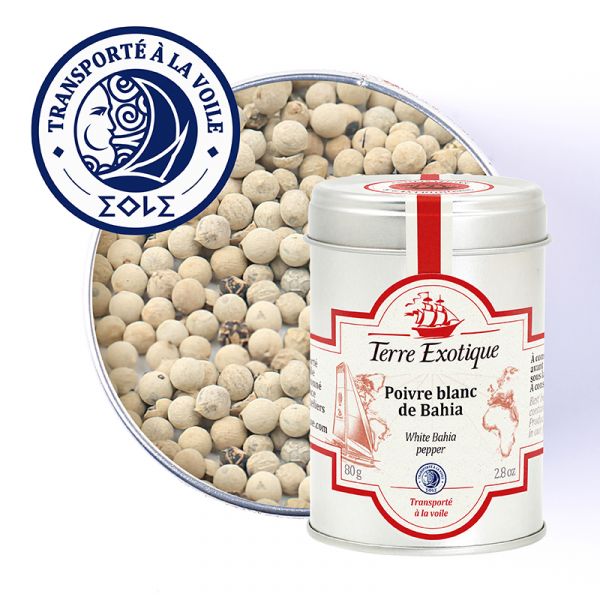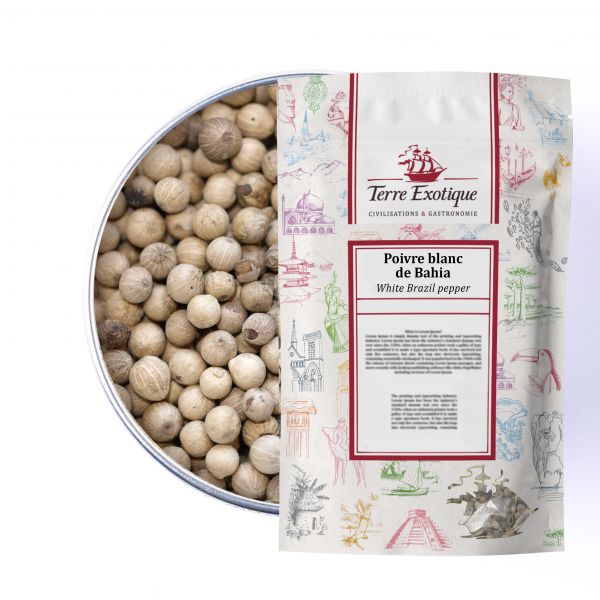





How to Cook with Bahia White Pepper
Bahia white pepper is incredibly versatile and can be used in a variety of dishes to add a touch of sophistication. It’s particularly suited for creamy sauces, white meats, and seafood. You can add it at the end of cooking to preserve its delicate aromas or freshly grind it to season your dishes just before serving.
Recipe Ideas for Cooking with Bahia White Pepper
- White Pepper Sauce for Chicken: Make a creamy sauce with Bahia white pepper, chicken broth, cream, and shallots to accompany roasted or grilled chicken;
- Sautéed Shrimp with White Pepper: Season sautéed shrimp with Bahia white pepper and a bit of lemon, then serve with rice or stir-fried noodles;
- Leek and Potato Soup: Add Bahia white pepper to a velvety leek and potato soup.
A Gentle Spice with Bahia White Pepper
Bahia white pepper offers a mild and slightly spicy flavor with delicate woody and citrus aromas. On the palate, it reveals a subtle heat that doesn't overpower other flavors but enhances them.
About Bahia White Pepper
Bahia white pepper is grown in the Bahia region of Brazil, where the climate is ideal for pepper production. The pepper berries are harvested when ripe, then the skins are removed, and the seeds are dried to achieve their characteristic white color. This traditional production process ensures a high-quality spice that respects artisanal methods.
Bahia White Pepper, a Brazilian Treasure
Pepper cultivation was introduced to Brazil in the 17th century in the Bahia region. It wasn’t until the 1930s that pepper began to be seriously cultivated and exported to Europe and North America. Today, the three main harvesting areas are Pará, Bahia, and Espírito Santo. Harvests take place from July to October.
| Allergen | Absence |
|---|---|
| Native country | BRÉSIL |
| Genus and botanical species | Piper nigrum |
| Ingredients | White pepper from Brazil |
| Nutritional Info | VN Energie pour 100 g (energy for 100g) : 296 kcal / 1239 kJ VN Matière grasse (fat) : 2 g Dont acide gras saturés (of which saturated fat) : 1 g VN Glucides (carbohydrate) : 65 g Dont sucres (of which sugars) : 0.65 g VN Protéines (protein) : 11 g Vn Sel (salt) : 0.05 g |
| TRACES EVENTUELLES D'ALLERGÈNES | céleri, sésame, moutarde, fruits à coques. |
 Français
Français 





